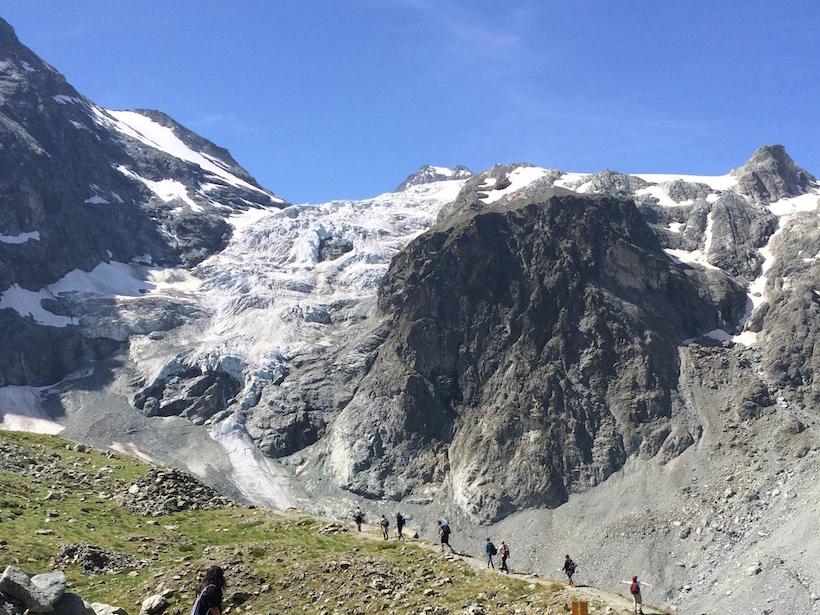Source: Water Resources Research
Glacial and nival basins in the Alps are especially vulnerable to changes in climate because of the high sensitivity of ice and snowmelt to rising temperatures. Because variations in insolation and melting can cause river discharge to fluctuate on a daily basis, it has been difficult to determine how runoff from these systems has responded to the rapid increase in average annual air temperatures that the region has experienced since the mid-1980s. A lack of multidecadal discharge records for stations close to glaciers, which are necessary to separate short-term hydrograph variability from longer-term trends, has limited previous investigations to seasonal studies.
Now Lane and Nienow have taken advantage of a unique 46-year data set from gauging stations in the Grande Dixence SA hydropower scheme to examine how glacial runoff has evolved in six high Alpine basins located within a 37-square-kilometer area in southwestern Switzerland. Using a statistical measure of diversity called the Shannon entropy index, the researchers quantified how daily hydrographs have changed in these basins, whose ice covers ranged from 31% to 90% at the start of the study period in 1969.
The results indicate that within the five most heavily glaciated basins, both the number of days with diurnal variations in discharge and the magnitude of these fluctuations have increased significantly since the late 20th century. The authors attribute these changes to two factors: the onset of rapid warming in the mid-1980s and the declining end-of-winter snowpack depths. They argue that the lower availability of snow to buffer fluctuating river flows, along with earlier seasonal exposures of glacial ice, decreases the glaciers’ surface albedo, which in turn leads to more rapid glacial melt. Collectively, these processes can account for the observed increase in the intensity of the basins’ daily discharge fluctuations.
The researchers’ use of daily discharge amplitudes to examine changes in glacial melt offers a novel and more direct way of investigating how Alpine, and potentially other, glaciers are changing over decadal timescales. As such, this study will likely serve as a new benchmark for additional research on the effects of global warming on glacial runoff. (Water Resources Research, https://doi.org/10.1029/2018WR024206, 2019)
—Terri Cook, Freelance Writer
Citation:
Cook, T. (2019), Decadal changes in glacial discharge in the high Alps, Eos, 100, https://doi.org/10.1029/2019EO119887. Published on 12 April 2019.
Text © 2019. The authors. CC BY-NC-ND 3.0
Except where otherwise noted, images are subject to copyright. Any reuse without express permission from the copyright owner is prohibited.

